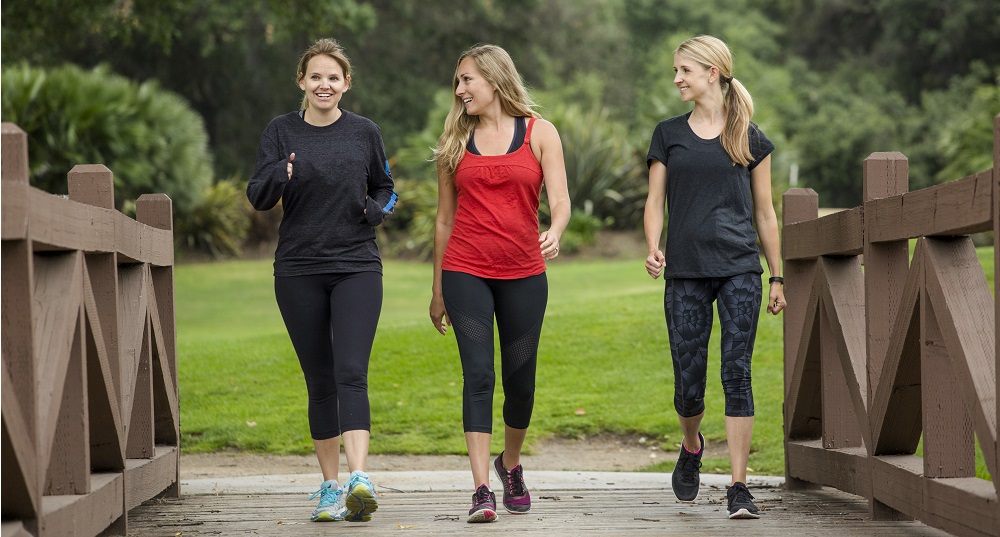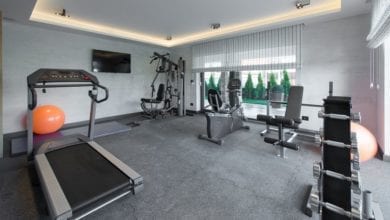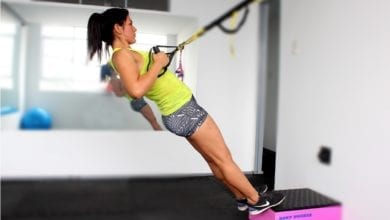
Our Editors independently research, test, and rate what we feel are the best products. We use affiliate links and may receive a small commission on purchases.
Walking has been shown to decrease blood pressure, strengthen the lower body, improve energy levels, and of course, help you lose weight. While walking is relatively low-impact and easy to do, if you want to lose weight you need to have a plan and be consistent with it.
If you’re feeling like you don’t know where to begin, we’re here to help! We’ve compiled the top walking tips for weight loss right here to make sure you start off with your best foot forward.
1. Preface
Remember that to lose weight, it’s all about calories in, calories out. That means that in order to shed body fat, you must be burning more calories than you consume. There are many handy tools online that can help you calculate your ideal daily calorie intake according to your height, current weight, activity level, and timeline for losing weight.
That also doesn’t mean that you have to put yourself on a strict diet. What we want here is to make healthy lifestyle changes that are actually feasible and maintainable for you. Extremes are never healthy and can lead to more serious issues later down the road.
It’s also a smart idea to speak with your physician about your plans beforehand. They can help give you some ideas and things to watch out for. Make sure your walking shoes are in good shape and appropriate for your environment and individual feet/walking style. You may also want to think about going up half a size from your regular shoe size as our feet tend to swell up a bit when we work out.
2. Workout Days
These don’t have to go in the exact order that we’ve placed them. Feel free to modify them to your exact needs and schedule requirements.
- Day 1 – 60 Minutes: This walk should neither be too slow nor too rigorous. Try walking at a consistently brisk pace throughout the full hour.
- Day 2 – Rest: After jumping right into the 60-minute workout from the day before, you’ll do well with a rest day.
- Day 3 – 30 Minutes: After a full day of rest, you should feel ready to complete a 30-minute brisk walk today. If you’re up for it, try and incorporate a strength training routine into your day, too. This can be a bodyweight routine or with dumbbells.Bodyweight: Try out 3 sets of pushups (on knees or regular) to failure, followed by 3 sets of 15 Russian twists (on each side, 30 in total), and 3 sets of walking lunges or bodyweight squats until failure.Dumbbells: Start with 3 sets of 15 bicep curls, 3 sets of 15 chest presses, and 3 sets of walking lunges or squats until failure.Strength training is a huge component not only in losing bodyfat, but in simply strengthening your muscles and improving mobility.
- Day 4 – 30 Minutes: Today is another 30-minute walk but leave off the strength training routine this time.
- Day 5 – 60 Minutes: Level up with a 60-minute walk today at a brisk pace.
- Day 6 – 30 minutes: 30 minutes of walking today, along with your strength training routine.
- Day 7 – Either 30 minutes or Rest: This is all up to you and how you’re feeling mentally and physically. If you’re feeling sore or fatigued, then you can take the day to yourself.
Again, feel free to move these days around as you see fit. You can also add in more strength training routines if you would like to.
3. Walking Workouts
Here are a few different kinds of routines you can use while walking. Not only the time walked is important, but the speed at which you do so. To figure out your intensity, we recommend using a heart rate monitor, whether that be in the form or a chest strap, watch, or arm band. A “brisk” walk should be where your HR is at 60-70% of your max heart rate. Anything higher than that will be fast walking and anything lower will be slow walking or strolling.
30-Minute Workouts:
- Start out by warming up at a slow pace for 5 minutes.
- Move up to a brisk walk, keeping your heart rate in the 60-70% of your max the entire 30 minutes.
- Cool down at a slow pace for another 5.
- Finish it off with a basic stretch routine afterwards, when your muscles are still relatively warm.
15-Minute Workouts:
- Warm up for 3 minutes at a slow pace.
- Head into a brisk walk for 10 to 15 minutes.
- Go back down to a slow pace for another 3.
60-Minute Workouts:
- Warm up for 5 minutes at a slow pace.
- Speed up to a brisk walk for a full 60 minutes, maintaining that same level of speed.
- Cool down for another 5 minutes.
4. Posture
Posture is crucial in keeping your body feeling great. Make sure that as you walk, you keep shoulders from hunching over. Keep them pulled down and back, make sure your core is engaged, and your spine is long. You can do this by imagining a string going from your spine all the way to the top of your head. Keep your arms loose, but don’t let them cross over your body so much that they’re causing your shoulders to come forward.
Your head should be in a neutral position; with your chin facing forward instead of pointing down or up. Keep your ears centered over the center of your shoulders, too.
Summary
Now that you’ve had a read through our guide for walking to lose weight, do you have a deeper understanding of how to get in an effective workout? What’s most important is that you simply get started. You don’t need to be too hard on yourself, but consistency and dedication really are the keys to seeing consistent results that last. We hope that our guide has been helpful for you! Thanks for tuning in, and we’ll see you again soon!




